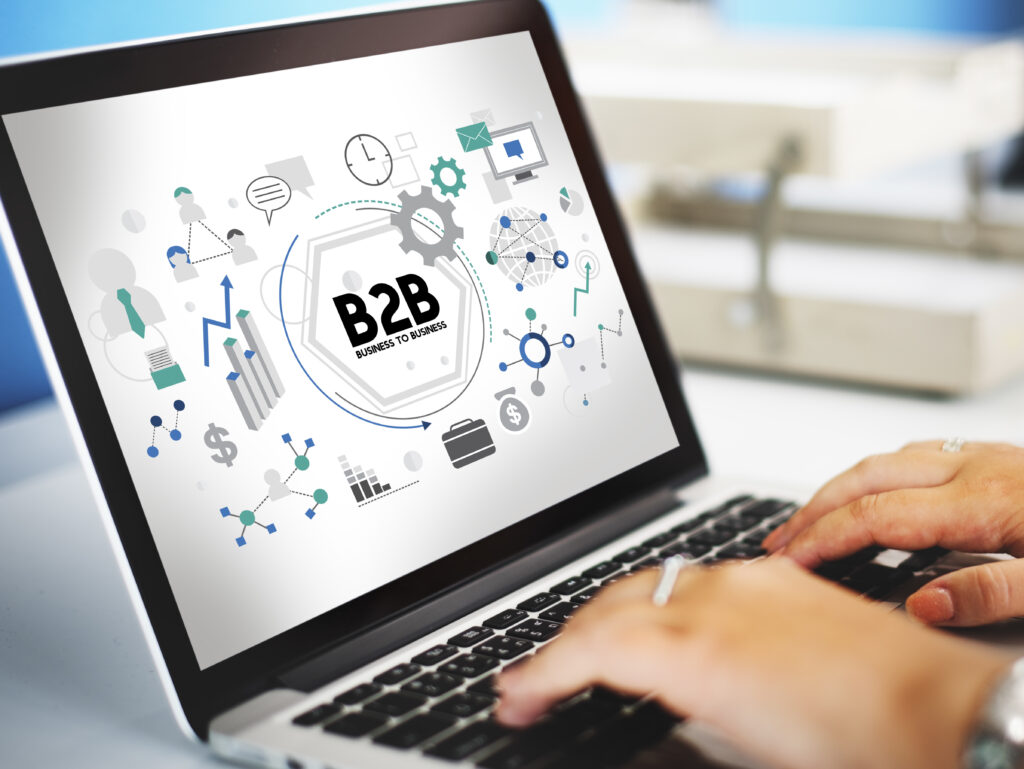The B2B eCommerce environment is growing rapidly and customers have high expectations. Let’s take a look at the various types of B2B eCommerce, as well as common misconceptions and some success stories.
B2B eCommerce current state
The eCommerce B2B model has become increasingly popular in recent years, as more businesses look to take advantage of the convenience and efficiency of online sales.
Some of the leading research agencies in the B2B eCommerce report that:
In 2020, the global market of B2B eCommerce was estimated as $14.9 trillion. It is five times greater than the B2C market. Forrester thinks that the US B2B market will take 17% of all B2B sales by 2023 and will account for $1.8 trillion.
The Grand View Research predicts that by 2027 global B2B eCommerce market size will reach $20.9 trillion.
Needless to say that B2B eCommerce is a promising area for digital entrepreneurs.
What is B2B eCommerce?
B2B eCommerce stands for business-to-business electronic commerce. It is a platform that enables businesses to trade products or services with each other over the internet. B2B eCommerce platforms often include features such as catalog management, inventory tracking, order management, and payment processing. Companies can use these platforms to set up vendor accounts, manage purchase orders, and track shipments.
Because orders are processed digitally, buying efficiency and effectiveness has improved for wholesalers, manufacturers, distributors and other types of B2B sellers. B2B eCommerce allows companies to streamline their procurement processes, reduce costs, and improve efficiency.

Five building blocks of a B2B eCommerce website consist of:
- Catalog Management System: It enables vendors to create, maintain and publish product and service catalogs for an online business.
- Product Recommendation System: It provides recommendations of products and services to customers based on their purchasing history, preferences, and other relevant information.
- Account Management System: It helps customers manage their accounts, including creating profiles, setting up payment options, and accessing order histories.
- Order Management and Fulfillment System: It handles the entire ordering process, from customer order placement to order fulfillment, shipment, and tracking.
- Inventory Management System: It helps businesses track and manage inventory levels to ensure they have sufficient stock to fulfill orders.
- Payment Gateway: It enables customers to make payments online using various payment methods, such as credit or debit cards, PayPal, or other payment processors.
- Security System: It provides protection against unauthorized access or breaches of customer and business data.
These components are interconnected, allowing for seamless operations and efficient transactions between businesses. A well-designed B2B eCommerce diagram can help businesses optimize their supply chain and increase sales, resulting in a more profitable and competitive organization.
The importance of B2B eCommerce
B2B eCommerce is essential for modern businesses because it allows them to:
- Reach a wider audience: By selling their products and services online, businesses can reach customers from all around the world, regardless of their physical location.
- Streamline the sales process: eCommerce platforms allow businesses to automate everything from order processing to invoicing, which saves time and reduces errors.
- Build stronger customer relationships: eCommerce platforms enable businesses to provide customers with personalized experiences, which can help foster loyalty and trust.
- Increase revenue: B2B eCommerce can help businesses generate more revenue by increasing their visibility, attracting new customers, and driving repeat sales.
How B2B eCommerce works
In B2B, one business sells a set of products or services to another business. Typically, there is a group or department that uses the vendor’s products and services. Occasionally, a single user on the buyer side makes a transaction in support of the company’s business goals. And some B2B transactions involve the entire company’s use of the products, such as office furniture, computers and productivity software.
For larger or more complex product purchases, the B2B product selection process is handled by a buying committee, including:
- a business decision-maker, such as the person responsible for the budget;
- a technical decision-maker, or someone who evaluates the capabilities of the prospective products; and
- influencers, such as individuals who provide input on the decision.
Large purchases might involve a request for proposal (RFP), in which the buyer invites prospective vendors to submit proposals detailing their products, terms and pricing.
B2B eCommerce works the same plus automation. You build a digital space where suppliers and buyers can connect, negotiate, and complete transactions. B2B sites typically provide a range of services to facilitate this process, including product catalogs, order processing, payment gateways, and shipping logistics. They may also integrate with existing ERP (enterprise resource planning) software to enable seamless supply chain management and real-time data exchange.
B2B vs B2C. What is the difference?
B2B processes are different from B2C commerce for two reasons:
- On the first hand, B2B eCommerce deals with complex negotiations and a need for personalized pricing depending on the customer. B2B eCommerce often requires a bespoke operation and customer service, and purchasing decisions can be influenced by multiple stakeholders.
- On the other hand, B2C (business-to-consumer) eCommerce refers to online transactions between a business and a consumer. In this case, an individual customer buys products or services from a business through an eCommerce platform. Whereas B2B sales often involve a customized negotiation process, B2C is more focused on convenience and transaction efficiency. The purchasing process is usually faster and targets a wider audience. The prices are usually fixed, and the purchasing decision relies mostly on the consumer’s individual preferences.
Types of B2B eCommerce
Now you know how B2B works and are convinced that you need a B2B eCommerce platform. What type to follow while forming the concept of your future site? Here are some established types of B2B marketplaces:
Supplier-oriented marketplace

In this type of B2B eCommerce, the marketplace is controlled by suppliers. They set up the storefronts and manage the transactions. Examples include Alibaba and ThomasNet.
Buyer-oriented marketplace
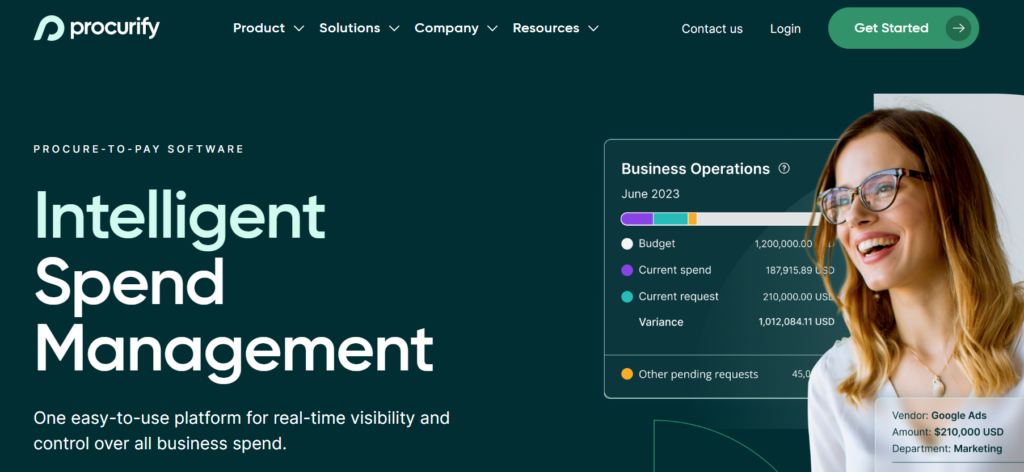
In this type of B2B eCommerce, buyers are in control. They set up the storefronts and manage transactions. Examples include Procurify and Ariba.
Intermediary-oriented marketplace
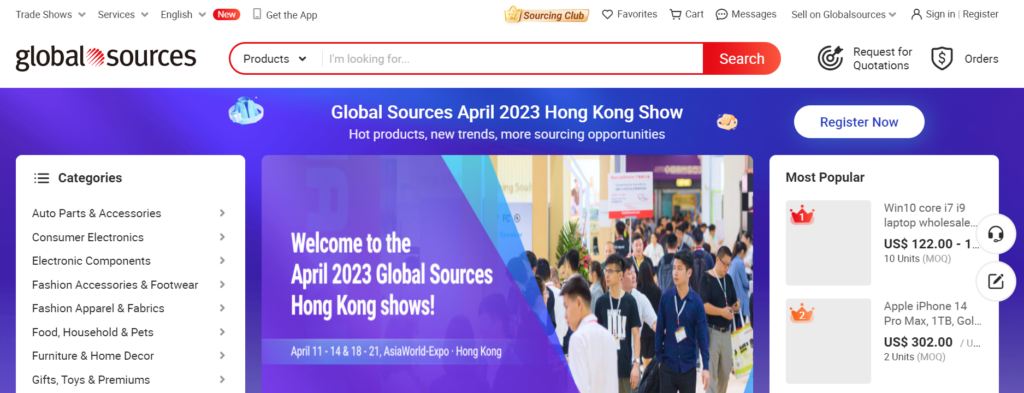
In this type of B2B eCommerce, intermediaries match buyers and sellers. Examples include Global Sources and TradeKey.
Collaborative platform
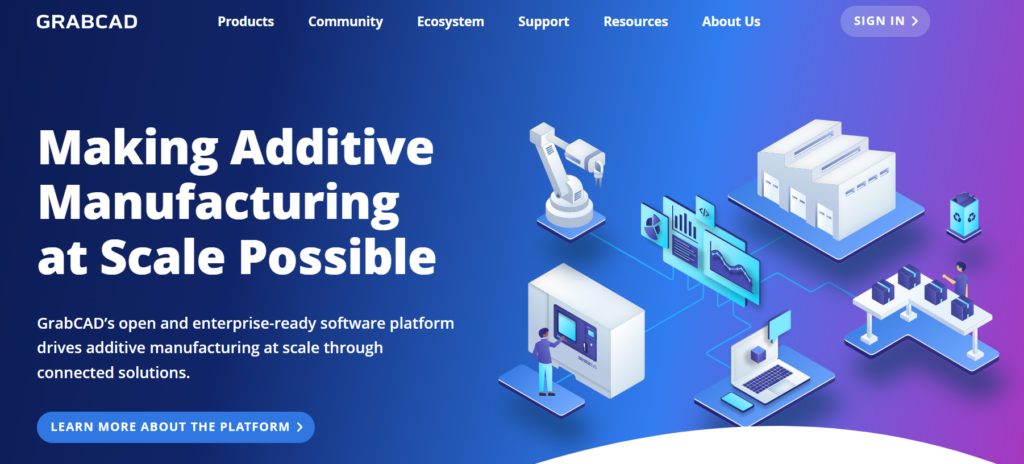
In this type of B2B eCommerce, businesses collaborate to create custom products or services. Examples include GrabCAD and Ponoko.
Private industrial network
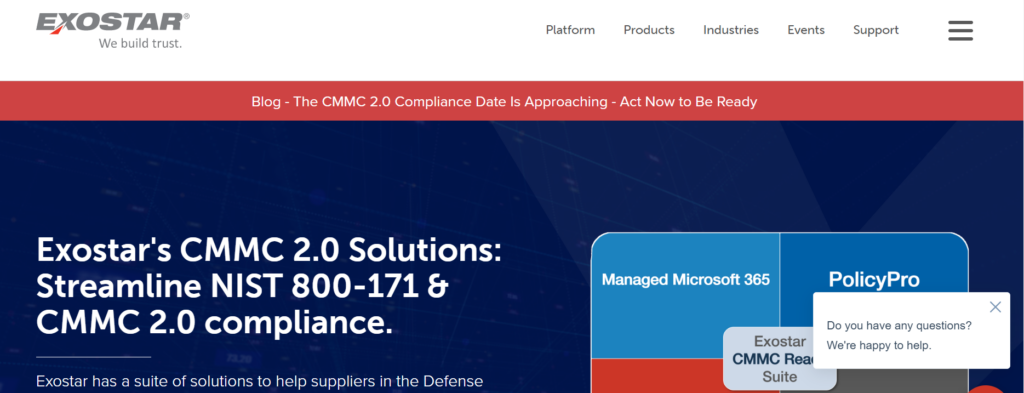
In this type of B2B eCommerce, businesses create a private network to exchange goods and services. Examples include Exostar and Elemica.
Integrated suites
These are comprehensive B2B eCommerce solutions that cover everything from procurement to customer service. Examples include Oracle and SAP.
These types are not exhaustive, and some platforms may combine multiple types.
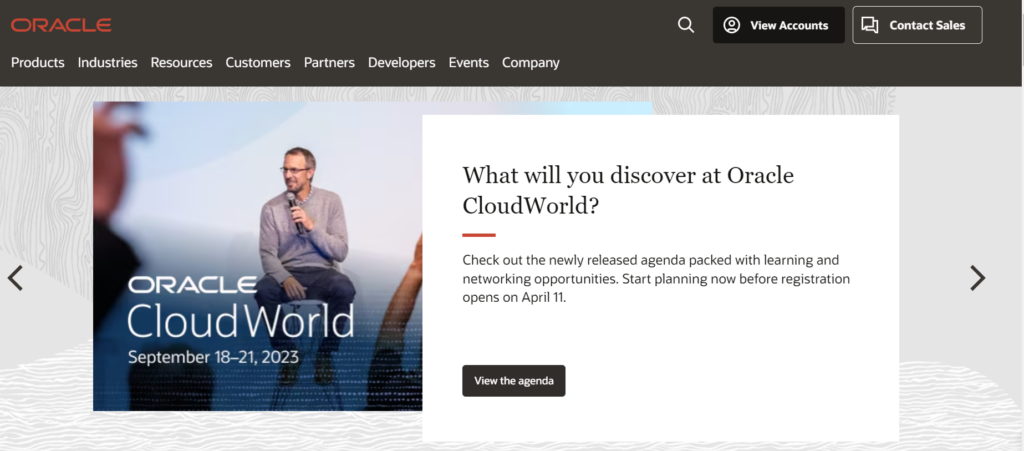
Our case
In our practice, we’ve got a case of a long-history family business from the US.
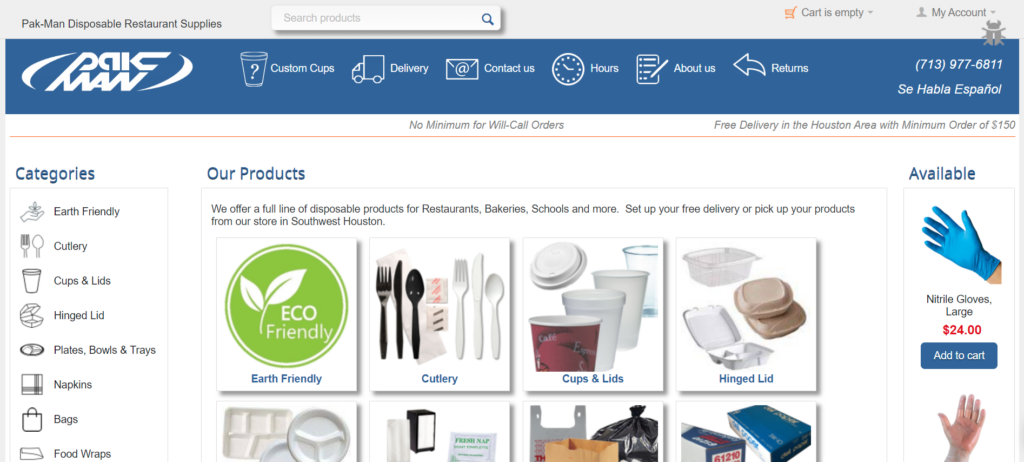
Pak-man has existed since 1993. With their wish to go online, business owners referred to us to recommend customizations and undertake the overall business shift to the webspace. We should say that this store is intermediary oriented as the company reps worried both about customer and vendor experience. Customization was the key in delivering an online platform to cater the interests of all parties. You can read more about the case here.
6 Stages of B2B eCommerce Business Building
B2B eCommerce business can vary depending on the business type, industry, target market, and other factors. Common stages of building a B2B marketplace include:
- Identification of business needs: The first stage involves identifying the needs of businesses, such as the products or services they require, their buying behavior, and the challenges they face.
- B2B eCommerce website development: Once the business needs are identified, the marketplace platform is developed based on the requirements of the buyers and sellers.
- Recruitment of buyers and sellers: The marketplace needs to attract buyers and sellers to join the platform, which involves marketing and recruitment efforts.
- Onboarding and verification: Once buyers and sellers have signed up, they need to be onboarded and verified to ensure they meet the requirements and standards of the marketplace.
- Transactions and payments: The marketplace facilitates transactions between buyers and sellers and handles payments, which involves setting up payment gateways and ensuring secure transactions.
- Customer service and support: Providing excellent customer service and support is essential for retaining customers and ensuring satisfaction with the marketplace.
4 Most Successful B2B eCommerce examples
Today, the Olymp of B2B platforms is governed by 4 key players. Their examples are known for B2B eCommerce best practice: strong online presence and successful business strategies. Let’s see what strategies they use to have an idea on how you can promote your B2B company.
Amazon Business
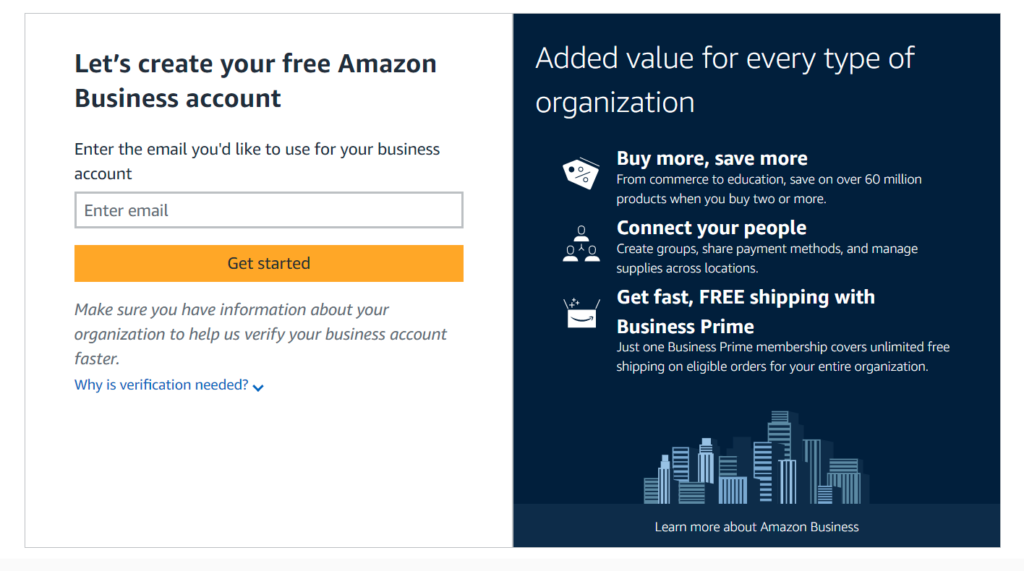
Amazon Business’s strategy is to become a one-stop-shop for all business needs. It aims to provide a comprehensive range of products including office supplies, industrial products, scientific equipment, and other supplies. Additionally, it provides business-only pricing, quantity discounts, and invoicing options to cater to the needs of small and medium-sized businesses.
Amazon Business also focuses on providing excellent customer service and offers features such as multi-user accounts, streamlined purchasing, and analytics tools for businesses to track their expenses and make informed decisions.
Alibaba.com
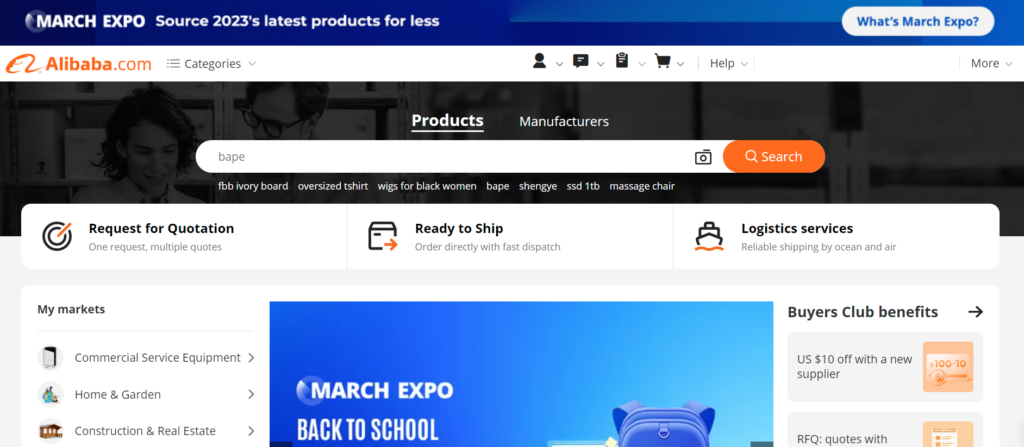
Alibaba.com is primarily a B2B eCommerce platform, which businesses can use to source goods and services. The company started out as a platform for Chinese manufacturers to sell their products to the international market, but has since expanded to include various other services such as logistics, online payments, cloud computing, and digital marketing.
Some of Alibaba’s previous business strategies have included:
- Expanding into new markets and verticals: Alibaba has expanded into various new markets, such as Southeast Asia, India, and Europe, as well as into new verticals such as cloud computing and digital entertainment.
- Investing in startups and acquiring other companies: Alibaba has invested in a number of startups and has also acquired various companies in areas such as retail, logistics, and technology.
- Developing technologies to improve user experience: Alibaba has developed technologies such as artificial intelligence and virtual reality to improve user experience and increase engagement on its platforms.
Uline
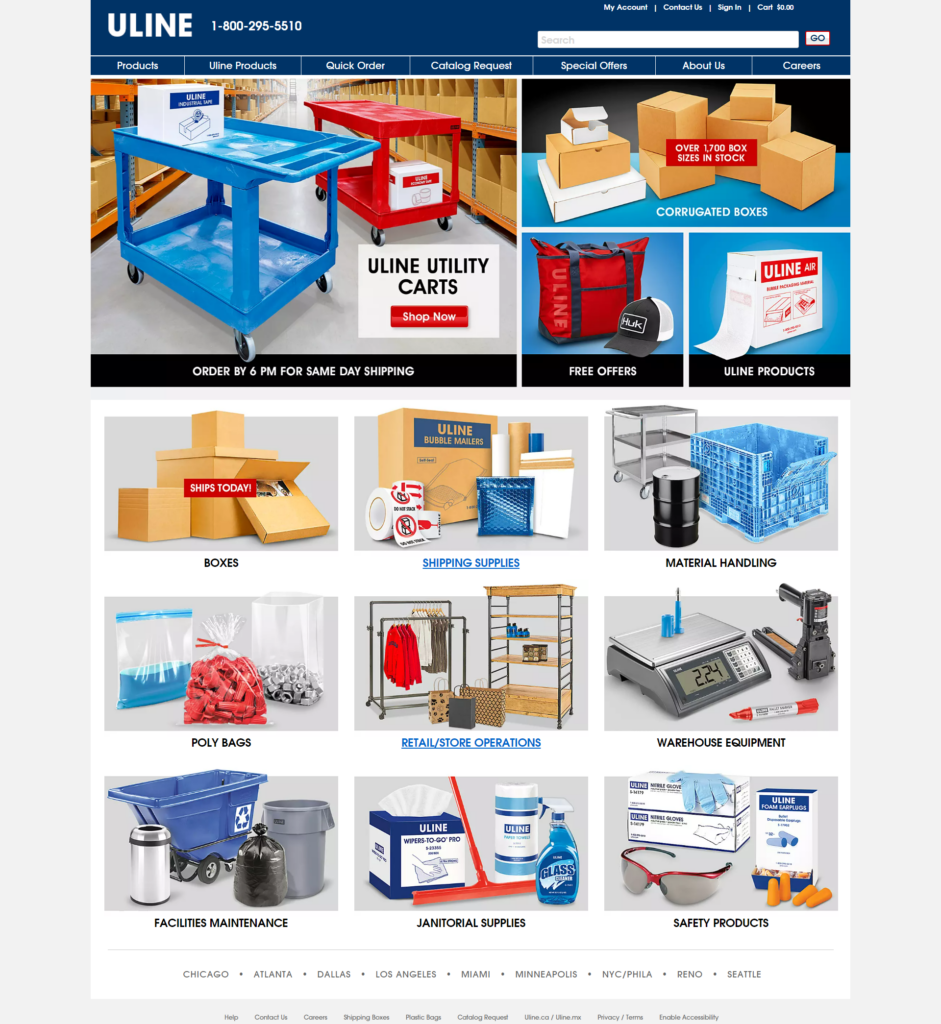
Uline’s business strategy is based on the concept of providing customers with high-quality packaging and distribution solutions. The company operates through a direct sales channel, where it sells its products directly to customers via online and offline platforms. Uline’s competitive advantage lies in its vast product offerings, quick delivery times, and a broad customer base. The company invests heavily in research and development and has implemented several innovative strategies to improve its shopping experience. Uline’s innovative strategy is heavily focused on digital transformation and eCommerce. They have implemented a strong online presence and have invested in technology to enhance their operations, such as automation in their warehouses. Overall, Uline’s business strategy revolves around providing exceptional customer service and quality products that meet the demands of its clients.
Grainger
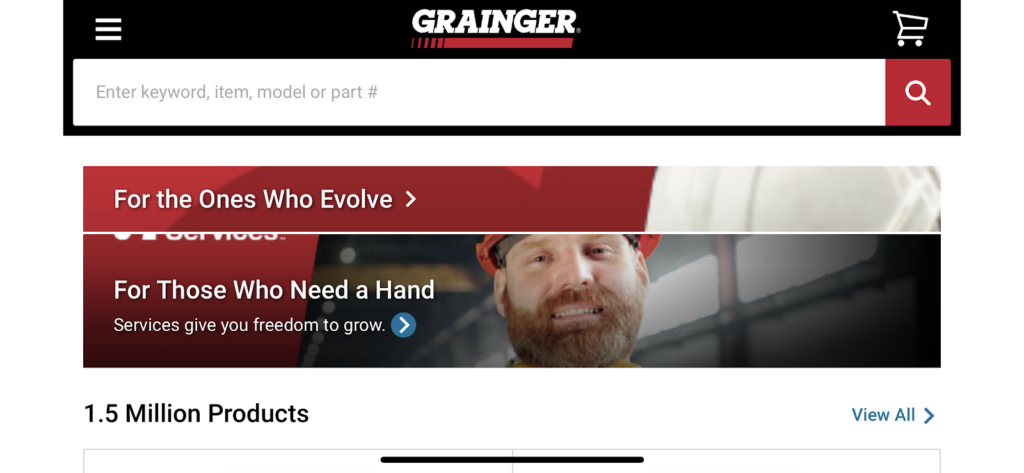
Grainger is a leading distributor of maintenance, repair, and operating (MRO) supplies, with a focus on providing solutions to businesses and institutions. Their business strategy includes customer-focused initiatives, leveraging technology, expanding product offerings, and diversifying their revenue streams.
B2B eCommerce Development trends
If you are in the process of developing and promoting your B2B platform, you should incorporate probable future development from the very beginning. We drafted a list of B2B eCommerce trends that may shape the industry in 2023 based on current developments and emerging technologies:
- Personalization: Just like B2C eCommerce, B2B eCommerce is also moving towards personalization to offer tailored experiences to individual customers. This trend will only grow stronger in 2023, as more companies adopt AI-based algorithms to analyze customer data and provide recommendations based on their preferences and behavior.
- B2B mobile eCommerce: With more and more people using smartphones for work and commerce, B2B eCommerce platforms will have to adopt a mobile-first approach to cater to this growing segment of customers. A seamless mobile experience will become more critical in the coming years.
- AI in B2B eCommerce: AI-based technologies like chatbots, voice assistants, and predictive analytics will become common in B2B eCommerce by 2023. These technologies can help streamline processes, reduce costs, and provide a better customer experience. For example, chatbots can reduce a great amount of waiting time since they are programmed to find information more quickly than a salesperson, not to mention that they can work 24/7.
- Selling on Marketplaces: B2B companies will start leveraging marketplaces like Amazon and Walmart to sell their products directly to end-users. By 2023, this trend will become more common, providing an alternative sales channel to traditional B2B channels.
- The payment trends. The story now is not just about the typical “credit card only” when you offer payment options to B2B buyers. There are many other methods that the customers would like to see on your checkout page including cash, check or purchase order. According to a BigCommerce’s survey of over 500 international B2B retailers:
- 94% prefer to pay by credit card
- 53% opt for paying by terms
- 51% are willing to pay by check
- 50% agree with purchase orders
- 26% choose to pay through mobile wallets such as Apple Pay or Amazon Pay, and the number is still increasing.
- Integration with blockchain technology for increased security and transparency
- Focus on Sustainability: Sustainability will become increasingly critical in B2B eCommerce, and companies that incorporate green practices will differentiate themselves from their competitors. By 2023, B2B companies will increasingly adopt sustainable practices to meet evolving customer demands.
The future of B2B eCommerce. Niche marketplaces
The time of surpassing B2B eCommerce leaders has gone. But you can still develop something unique to stand apart from competitors. The future of B2B eCommerce is with niche marketplaces. Nowadays, large B2C online stores strive to enter the B2B market and become niche marketplaces. B2B niches are essential for businesses to grow and succeed as they provide companies with an opportunity for expansion and diversification while also offering a competitive advantage. By specializing in a particular niche, businesses can become experts in their field and build a loyal customer base. In addition, these niches allow businesses to differentiate themselves from their competitors by offering unique products, services or solutions that meet specific industry requirements.
Some examples of B2B niches include IT services, commercial cleaning supplies, industrial equipment, and software solutions.
For your inspiration you can use the experience of such existent B2B niche marketplaces as Thomasnet.com for industrial products, Alibaba for global trade, UpCounsel for legal services.
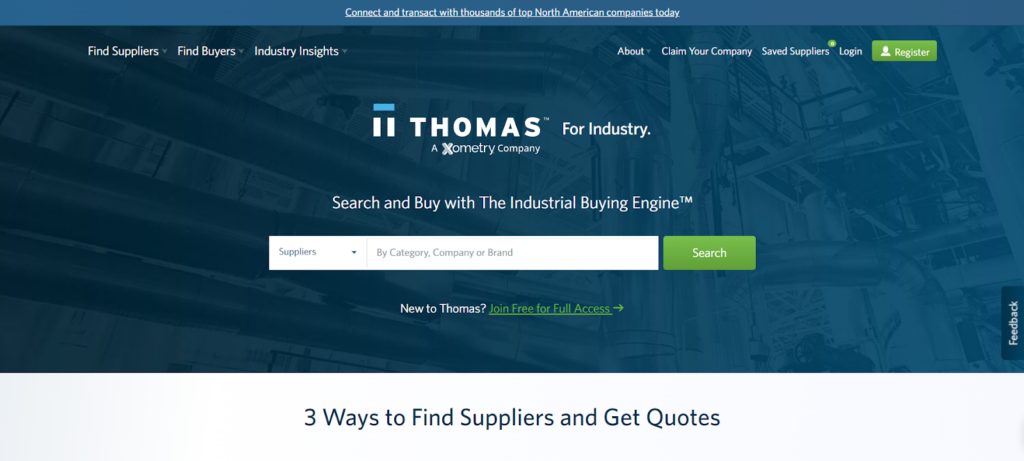
Thomasnet’s popularity can be attributed to its user-friendly interface, high-quality product information, and the fact that it’s a one-stop-shop for finding and comparing suppliers. It offers a wide range of information, including company information, product information, and technical specifications. Their database is extensive, featuring over 70,000 suppliers and millions of products. Their platform has been in operation for over a century, making them a trusted name in the industry.
To identify your B2B niche, you need to do thorough research and analysis of the market, industry trends, target audience and competition. Once identified, businesses should develop a solid marketing strategy that targets their niche and effectively communicates their value proposition.
So, if you are looking to target a B2B niche, thorough research and analysis will help you find the right niche that aligns with your business goals and objectives.
Looking for the right B2B eCommerce solution?

When looking for customized B2B eCommerce solutions, it is important to consider must-have features and the unique needs of your business. What is the must is explained above. As for unique needs, we can suggest the following key specifications of B2B eCommerce:
- Personalized Pricing: B2B eCommerce often requires a personalized pricing structure based on the business needs of individual customers.
- Advanced Search: B2B eCommerce platforms need to have advanced searching capability for businesses to find products they are looking for quickly.
- Customizable Catalogs: B2B eCommerce platforms should offer the ability for businesses to customize their catalogs to meet their unique needs.
- Custom Quotes: B2B eCommerce platforms should allow businesses to request custom quotes for specific products or volumes.
- Integration with ERP Systems: B2B eCommerce platforms should integrate with other business systems like ERP systems to provide seamless data flow between systems.
- Scalability: The solution should be able to handle the growing needs of your business in the long run.
- Security: Robust security features should be provided as you’ll be handling sensitive customer data.
- User Experience: The platform should provide a seamless user experience, making it easy for buyers to navigate, search and buy products.
Benefits of Using a B2B eCommerce Platform
Regardless of what B2B eCommerce type or niche you choose, using a B2B eCommerce platform brings value anyway.
In overall, the benefits of B2B eCommerce include:
- Increased efficiency: B2B eCommerce allows businesses to streamline their procurement processes, reducing the time and resources required to complete a transaction.
- Improved accuracy: Electronic transactions can help reduce errors and ensure that orders are processed correctly.
- Greater convenience: Buyers can place orders at any time, from anywhere, without the need for face-to-face interactions.
- Expanded reach: Online marketplaces can provide businesses with access to a wider range of customers and suppliers than traditional channels.
- Increased sales: A B2B eCommerce platform enables seamless transactions, simplifies the purchase process, and provides 24/7 accessibility.
- Improved customer experience: B2B eCommerce platforms offer features such as self-service options, order tracking, and easy access to product/service information, resulting in a better customer experience.
- Better inventory management: B2B eCommerce platforms allow businesses to automate their inventory and ordering processes, resulting in better management of inventory and reduced instances of stock-outs.
- Cost savings: B2B eCommerce platforms can significantly reduce operational costs, such as labor and paper expenses associated with manual paperwork, saving time and money.
- Data and analytics: B2B eCommerce platforms provide data and analytics that help businesses identify customer preferences, market trends, and optimize their operations.
With the growing B2B eCommerce popularity, more companies look for ways to automate their procurement processes and reduce costs. Many companies now have dedicated B2B eCommerce teams, and there are numerous B2B eCommerce platforms available to choose from.
Must-Have Features for B2B eCommerce Platforms
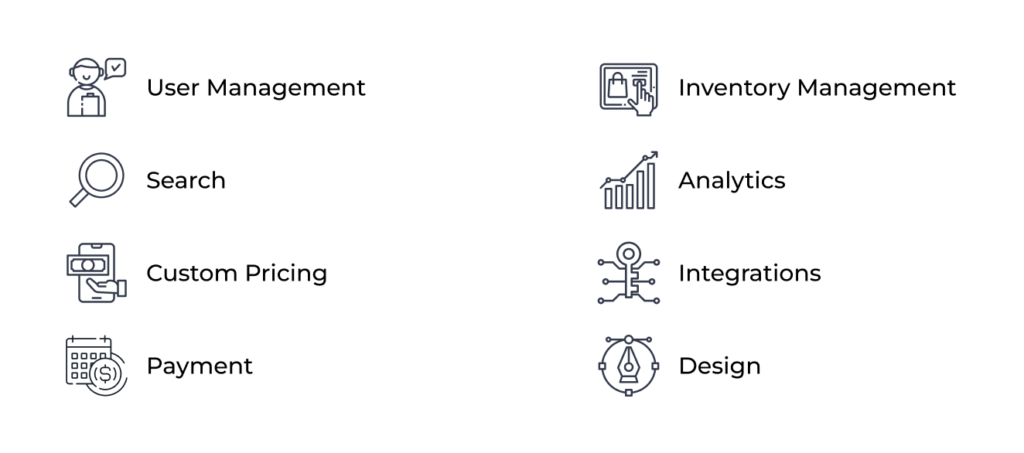
Based on our experience, we can recommend having the following features for B2B eCommerce Platforms:
- User management tools for managing roles, permissions, and access controls.
- Advanced search capabilities to help buyers find specific products and services.
- Custom pricing and quoting tools for creating personalized quotes and contracts.
- Integration with popular payment gateways and other financial tools.
- Multiple payment options, including credit lines and payment plans.
- Real-time inventory management tools for monitoring stock levels and order fulfillment.
- Integration with popular shipping and logistics providers.
- Robust analytics and reporting tools for tracking sales, conversion rates, and other key metrics.
- Easy integration with other third-party software applications and services.
- Responsive B2B eCommerce design and mobile optimization for seamless browsing and purchasing on any device.
Make your B2B eCommerce Portal
Successful B2B site creation depends on how deep are your business insights, how well you can communicate them to software developers, and how good the chosen software experts are. Every component is equally important in this chain.
Our team can facilitate your B2B platform creation as it includes all-kind experts needed for eCommerce sites. B2B eCommerce consulting is the first thing you get from our sales reps, when you send your RFQ to us. Site architects and business analysts can select tech stack and juxtapose your requirements on them adding some room for scaling your project in future. Experienced developers can customize your B2B site for the business needs according to analyst recommendations. SysOps and DevOps engineers can ensure secure placement of your site and its protection against cyberattacks. And custom modules can add more flexibility in your B2B ecommerce development project.
FAQs About B2B eCommerce
Is B2B eCommerce secure?
B2B eCommerce can be secure if proper security measures are taken. These security measures usually include data encryption, secure payment gateways, firewalls, and antivirus software. It is also important that businesses protect their customers’ personal and financial data by only collecting what is necessary and not storing it longer than needed. Additionally, businesses should monitor their systems for any suspicious activity and have a plan in place in case of a data breach.
How do you determine pricing in B2B eCommerce?
Pricing in B2B eCommerce is determined based on various factors such as manufacturing cost, competition, market conditions, customer demand, perceived value, and profit margin. The pricing strategy may differ from business to business, but some common strategies include cost-plus pricing, value-based pricing, and dynamic pricing. Cost-plus pricing involves adding a markup percentage to the manufacturing cost, while value-based pricing determines the price based on the perceived value of the product or service. Dynamic pricing, on the other hand, sets the price based on real-time market conditions and factors such as demand and supply.
How can B2B businesses become successful in eCommerce?
We can provide you some tips on how B2B businesses can become successful in eCommerce:
– Develop a robust eCommerce strategy that aligns with your business goals and objectives.
– Invest in a powerful eCommerce platform that can integrate with your existing systems and offer flexibility and scalability.
– Ensure that your eCommerce site is user-friendly, visually appealing, and easy to navigate.
– Provide high-quality product information, detailed descriptions, and images on your eCommerce platform to help your customers make informed decisions.
– Implement effective search engine optimization (SEO) strategies to increase your visibility and enhance your online presence.
– Leverage social media, email marketing, and other digital marketing channels to drive traffic and improve customer engagement.
– Offer flexible payment options, reliable shipping, and excellent customer service to ensure customer satisfaction and loyalty.
– Continuously monitor and analyze your eCommerce performance to identify areas for improvement and optimization.
In summary, the key to success in eCommerce for B2B businesses is to develop a comprehensive strategy, invest in the right technology, provide a seamless user experience, and focus on building lasting customer relationships.
What is B2B wholesale eCommerce?
B2B wholesale eCommerce means conducting business transactions between two or more businesses through an online platform. It enables businesses to buy or sell large quantities of goods and services at wholesale prices. B2B wholesale eCommerce platforms facilitate electronic data interchange (EDI) and electronic funds transfer (EFT) for secure and efficient transactions.
How does B2B eCommerce differ from D2C eCommerce?
B2B eCommerce for manufacturers involves the selling of products from the manufacturer to other businesses. This type of eCommerce often involves large quantities and more complex product specifications. The business-to-business eCommerce market has been growing rapidly in recent years and is expected to continue to do so in the future. Some popular B2B eCommerce platforms for manufacturers include Alibaba, Global Sources, and Thomas.
Direct-to-consumer (D2C) refers to the practice of selling products directly to consumers through eCommerce platforms. This has become increasingly popular in recent years, as it allows manufacturers to cut out the middleman and increase profit margins. D2C can also allow for more direct communication between manufacturers and consumers, which can lead to better product development and customer satisfaction. Popular D2C eCommerce platforms include Shopify, WooCommerce, and CS-Cart.
How to determine the size of a B2B company?
There are several ways to determine the size of a B2B company:
– Revenue – Revenue is the most common metric used to determine the size of a company. You can check the revenue of a B2B company in their annual report, financial statements or through third-party platforms like Hoovers or D&B.
– Number of Employees – The number of employees is also a good indicator of a company’s size. You can check the number of employees on their website, LinkedIn or Glassdoor.
– Market Share – A company’s market share is another good indicator of its size. You can check the company’s market share in its industry through research reports and market analysis.
– Asset Value – The value of assets owned by a company is another way to determine the size of a company. You can check this on their balance sheet or financial statements.
What kind of payment options should I offer to B2B customers?
Here are some insights on the types of payment options you can offer to B2B customers.
– Bank transfers – Allow B2B customers to pay via direct bank transfers. This can be a convenient option for customers who prefer offline payments.
– Credit cards – Accepting credit cards is a popular payment option for B2B customers. It offers quick and easy transactions.
– E-wallets – E-wallets offer a secure and fast payment option for B2B customers. This is especially useful for customers who prefer digital payments.
– Invoice financing – Offer financing options to B2B customers who require additional funding to make their payments.
– Crypto payments – A cryptocurrency is used for transactions between businesses. It is a growing trend in the business world as it offers advantages such as lower transaction fees, faster settlement times, and increased security. Some popular B2B cryptocurrency examples include Ripple (XRP), Stellar (XLM), and Ethereum (ETH). Companies like IBM and Santander are already using these digital currencies for cross-border payments and other B2B transactions.
By providing multiple payment options, you can cater to the diverse needs of your B2B customers and foster stronger customer relationships.
How to form an RFP for B2B platform customization?
When looking for the right B2B solution, you should be able to form the right request. In business terms it is usually referred to as RFP.
A Request for Proposal (RFP) is a document that companies issue to solicit proposals from potential vendors or service providers. In B2B eCommerce, the RFP is a common method used by businesses to implement electronic procurement systems or software.
A B2B eCommerce RFP typically includes the company’s requirements and objectives for the eCommerce system or software, such as features, functionality, and integrations. The document will also outline the evaluation criteria that the company will use to assess the vendor’s proposal.
The RFP serves as a guide for vendors to understand the business needs and formulate their proposals accordingly. It also helps businesses to compare and evaluate proposals from different vendors to make an informed decision.
Generally, the B2B eCommerce RFP process involves the following steps:
– Develop a comprehensive list of requirements and objectives for the eCommerce system.
– Prepare an RFP document that includes the list of requirements, evaluation criteria, and other details.
– Publicly advertise the RFP to solicit proposals from relevant vendors.
– Review and evaluate the proposals received from vendors.
– Shortlist the vendors and conduct a demo or interview to select the final vendor.
Overall, a B2B eCommerce RFP is an essential tool for businesses to find the best eCommerce solution that fits their specific needs and objectives.
How to measure effectiveness of a B2B eCommerce site?
To measure how well your site runs, you should track your business KPIs. B2B eCommerce metrics may include:
– Conversion rates: This metric measures the number of visitors who complete a purchase on your website. A high conversion rate indicates that your website is optimized for sales.
Average order value (AOV): This metric measures the average amount of money customers spend each time they make a purchase. A high AOV indicates that customers are buying expensive products or adding more products to their cart.
– Customer Lifetime Value (CLV): This metric measures the total amount of money a customer spends on your website during their lifetime as a customer. A high CLV indicates that your website is retaining customers and fostering loyalty.
– Return on Investment (ROI): This metric measures the amount of revenue generated compared to the amount invested in marketing and advertising campaigns.
– Customer Acquisition Cost (CAC): This metric measures the cost of acquiring new customers through marketing and advertising campaigns.
– Checkout flow rate in B2B eCommerce: refers to the speed at which customers complete the purchasing process. It is essential to have an efficient and straightforward checkout flow to ensure that customers can complete their purchases quickly and easily. This can involve streamlining the checkout process and reducing the number of steps required to complete the transaction.
To view eCommerce benchmarks by industry, you can check out the resources below:
– Digital Commerce 360: This site offers market size and ranking by industry and an overview of eCommerce sales trends.
– Emarketer: This website provides the latest B2B eCommerce industry statistics, forecasts, and trends.
– McKinsey: This website offers insights and metrics specific to B2B eCommerce across different industries.
What is B2B eCommerce customer journey?
The B2B eCommerce customer journey refers to the process a business customer goes through when purchasing products or services online from another business. This journey typically includes several stages, from discovery and research to purchasing and post-purchase support.
Some key elements of the B2B eCommerce customer journey include:
– Research and discovery: Business customers will typically begin their journey by researching products and services online, using search engines, industry directories, and social media to learn more about potential suppliers.
– Evaluation and comparison: Once a customer has narrowed down their options, they will begin to evaluate suppliers based on factors such as price, product quality, and customer service.
– Purchase: The final stage of the customer journey involves actually making the purchase, which may include placing an order online, setting up an account with the supplier, and arranging for payment and delivery.
